If you’ve used tools like Perplexity or SearchGPT, you know how conversational search feels, getting clear, intelligent answers instead of sifting through blue links.
Now, Google has officially entered the space with a new feature called ‘AI Mode’.
Unveiled at Google I/O 2025, AI Mode represents the most significant transformation in search technology in over two decades.
Whether you're a business owner, marketer, or content creator, understanding AI Mode is crucial for thriving in this new era of search.
What is Google AI Mode?
Google AI Mode is a conversational search feature that replaces traditional link-based results with an AI chatbot interface directly within Google Search.
Instead of showing you 10 blue links, AI Mode gives you a direct answer. Want to dig deeper? Just ask a follow-up question. It remembers the conversation context and builds on your previous queries.
Think of it like ChatGPT, but it uses Google's massive search index to find information. It can chat with you, answer follow-up questions, and even help with complex tasks.
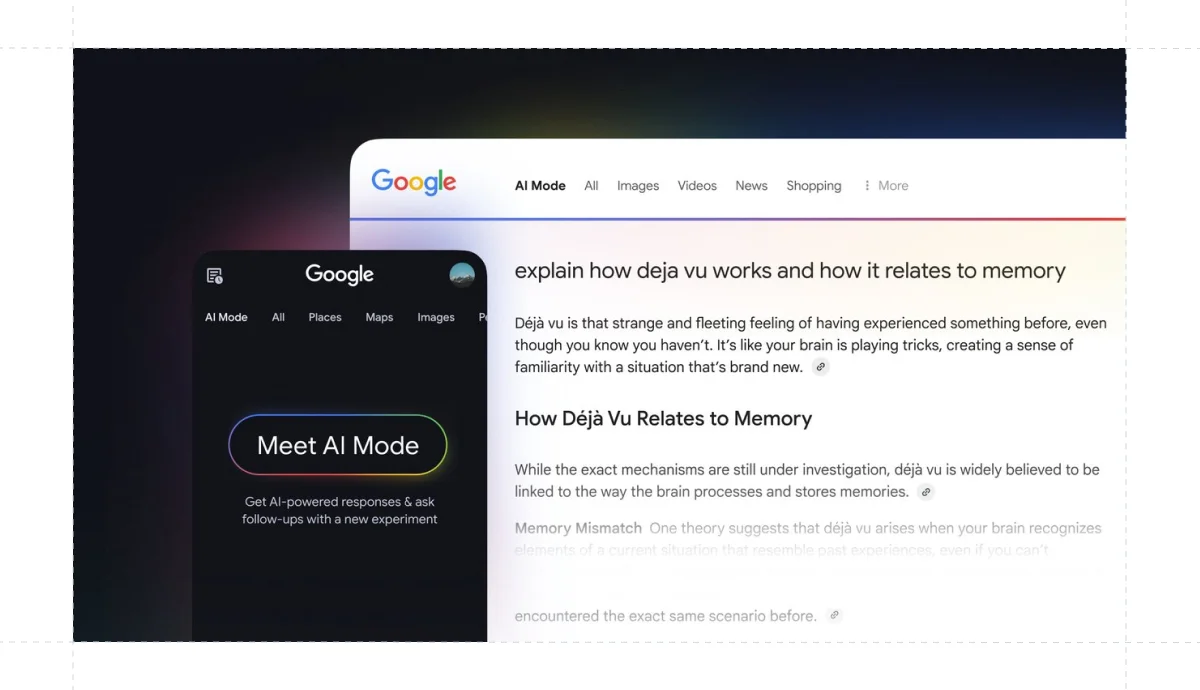
Built on a custom Gemini 2.5 model, AI Mode utilises a feature called "query fan-out."
It breaks your question into smaller sub-questions and searches for answers simultaneously.
Then it synthesises everything into one coherent response.
But here's the kicker: it's multimodal. Text, voice, or images - it doesn’t matter. AI Mode handles them all.
Point your camera at something and ask questions about it. The AI analyzes what it sees and responds in real-time.
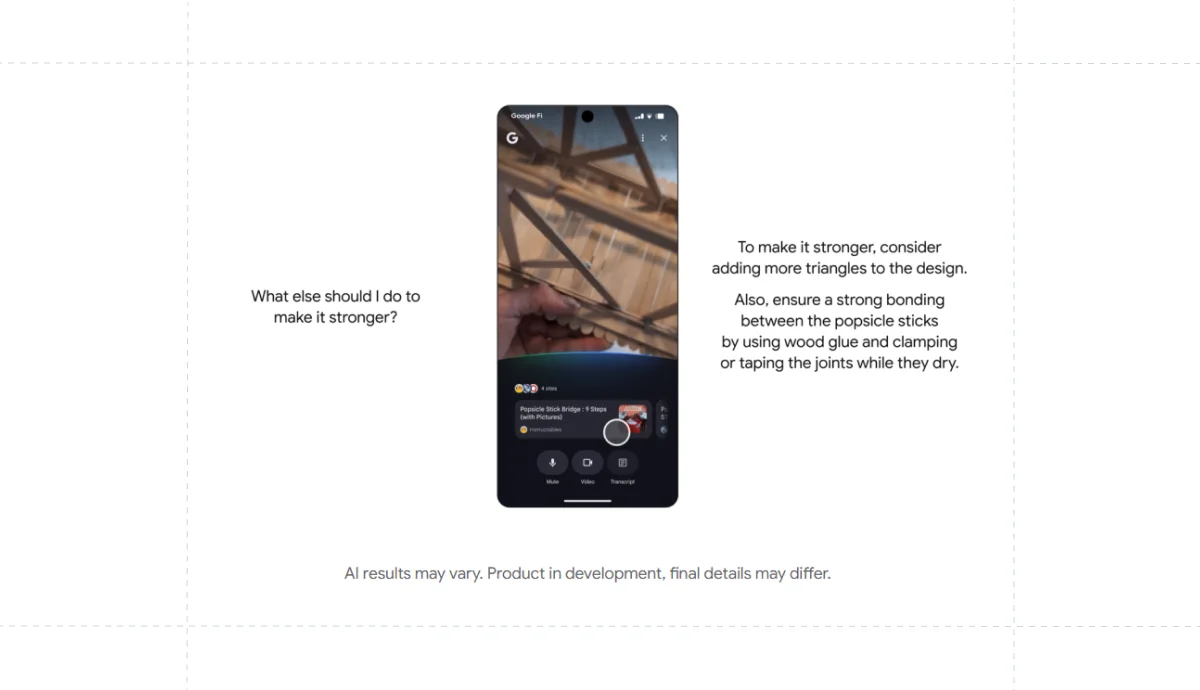
The result? Google claims AI Mode 'dives deeper into the web' than traditional search. And based on early testing, that's not just marketing speak."
Hyperpersonalization in Google AI Mode
But here's where things get interesting, and maybe a little creepy.
AI Mode doesn't just search the web. It searches your life.
Gmail conversations, Calendar events, Maps history, YouTube watches, search history, AI Mode pull from your entire Google ecosystem to personalize responses.
Planning a weekend trip?
It remembers that Italian restaurant you saved three weeks ago.
Looking for activities?
It knows you prefer hiking over museums based on your past searches.
The result? Search results that feel like recommendations from a friend who knows you really well.
Whether that excites or terrifies you probably depends on how much you trust Google with your data.
How to Access Google AI Mode?
If you're in the U.S. with a Google account (18+), you'll see a new "AI Mode" tab in Google Search. No invite needed. No waiting list. It just appears.
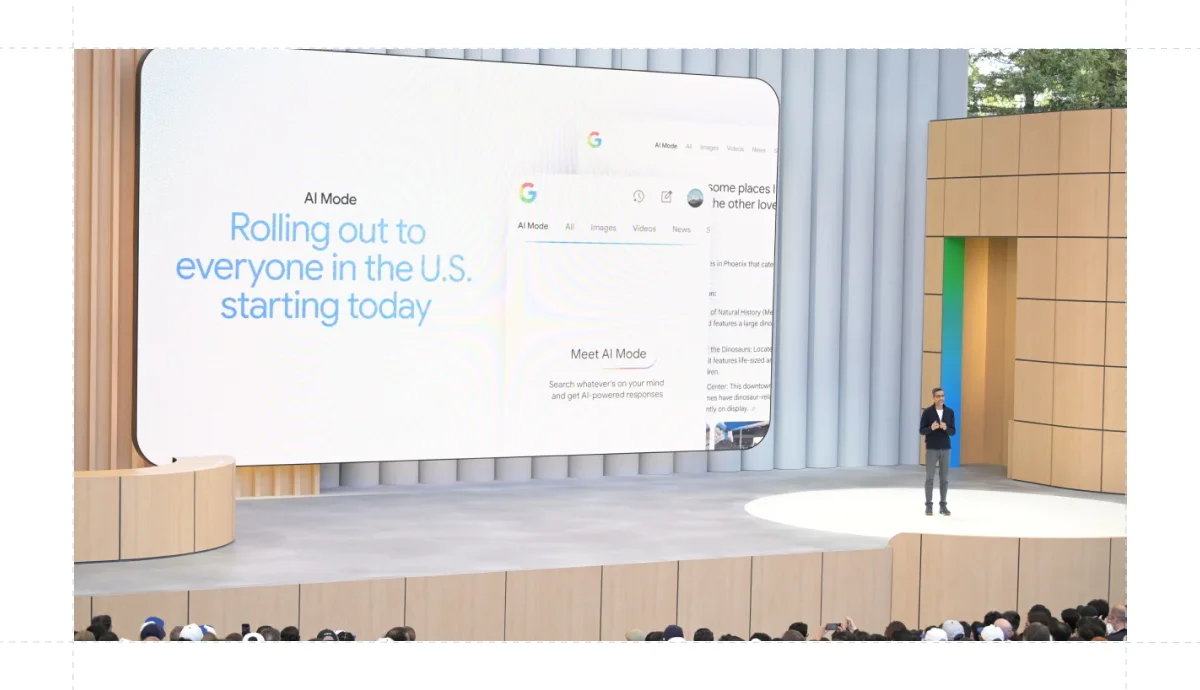
Outside the U.S.? Use a VPN or a business VPN to connect to a U.S. server. Google hasn't announced international rollout dates yet, so this might be your only option for now.
Note: Google recommends enabling Web & App Activity (your search history) for the full experience. AI Mode can function without it, but you'll miss out on the personalization features that make it powerful.
Once you're in, using AI Mode feels exactly like chatting with some other AI search engines, like ChatGPT or Perplexity. Type your question, get an answer, and ask follow-ups. Simple as that.
What can you do with Google AI Mode?
With Google AI Mode rolling out, we gain access to numerous functions and options that we can utilise.
Turns out, quite a lot. Here are the standout features:
1. Complex Q&A and deep research
Forget spending hours researching. AI Mode's Deep Search scans hundreds of pages and delivers expert-level reports in minutes. Complete with citations.
2. Interactive follow-ups
Refine your query or ask new questions in context. After providing an initial answer, simply type a follow-up, and AI Mode will update the response while retaining the original context.
3. Visual search
Use your camera or an image. With Search Live, point your device and ask questions about what you see.
Google will analyze the image and chat about it in real-time, explaining what objects are in view or how to resolve an issue.
4. Agents and tasks
Let Google do multi-step tasks. AI Mode can search across sites, compare options, and even start processes like ticket booking. It handles tedious steps but always lets you complete the purchase, keeping you in control.
5. Shopping assistance
Browse and buy via chat. In AI Mode’s Shopping experience, you can describe a desired product and get help narrowing choices using Google’s Shopping Graph.
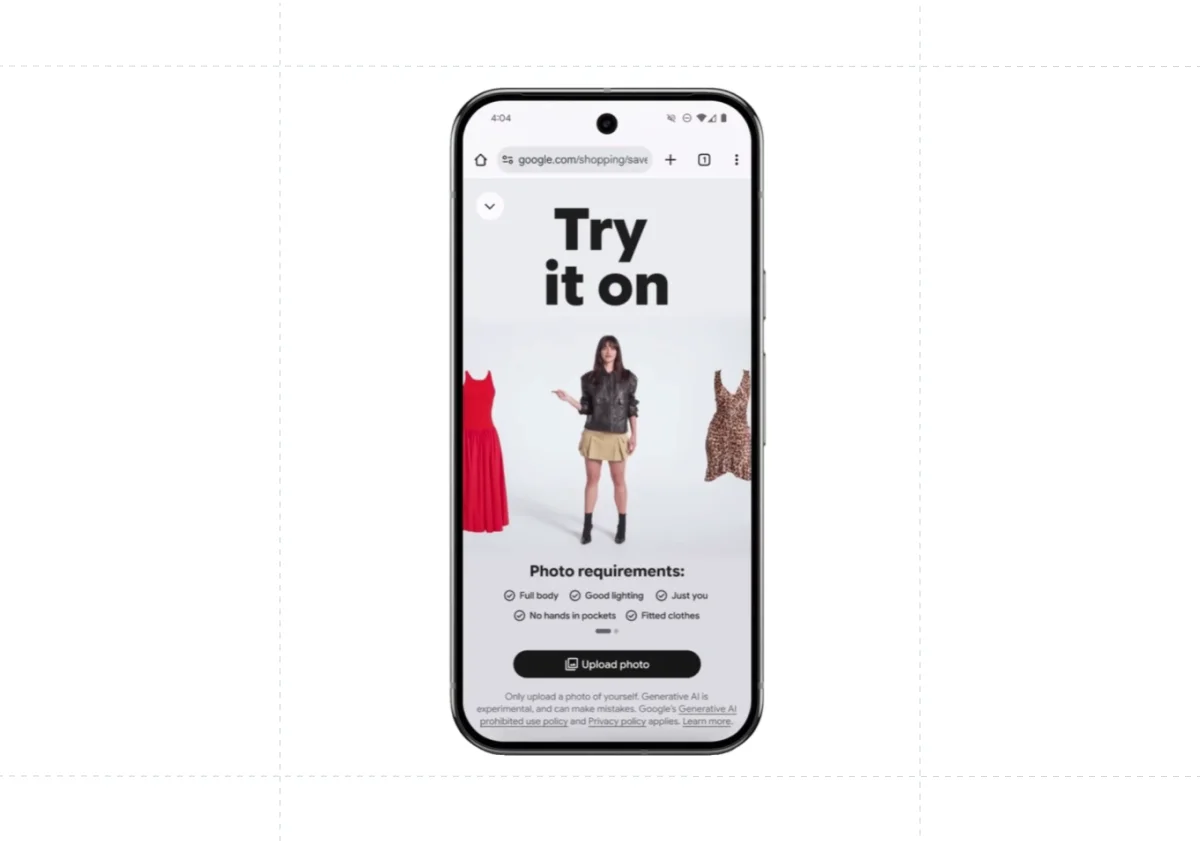
It offers features such as virtual try-on clothes and agent-based checkout.
6. Planning and recommendations
Get personalized suggestions. For example, ask for fun things to do in a city based on your preferences, and AI Mode can tap into your confirmed travel plans, past restaurant bookings, or Gmail trips (if you opt in) to recommend an itinerary tailored to you.
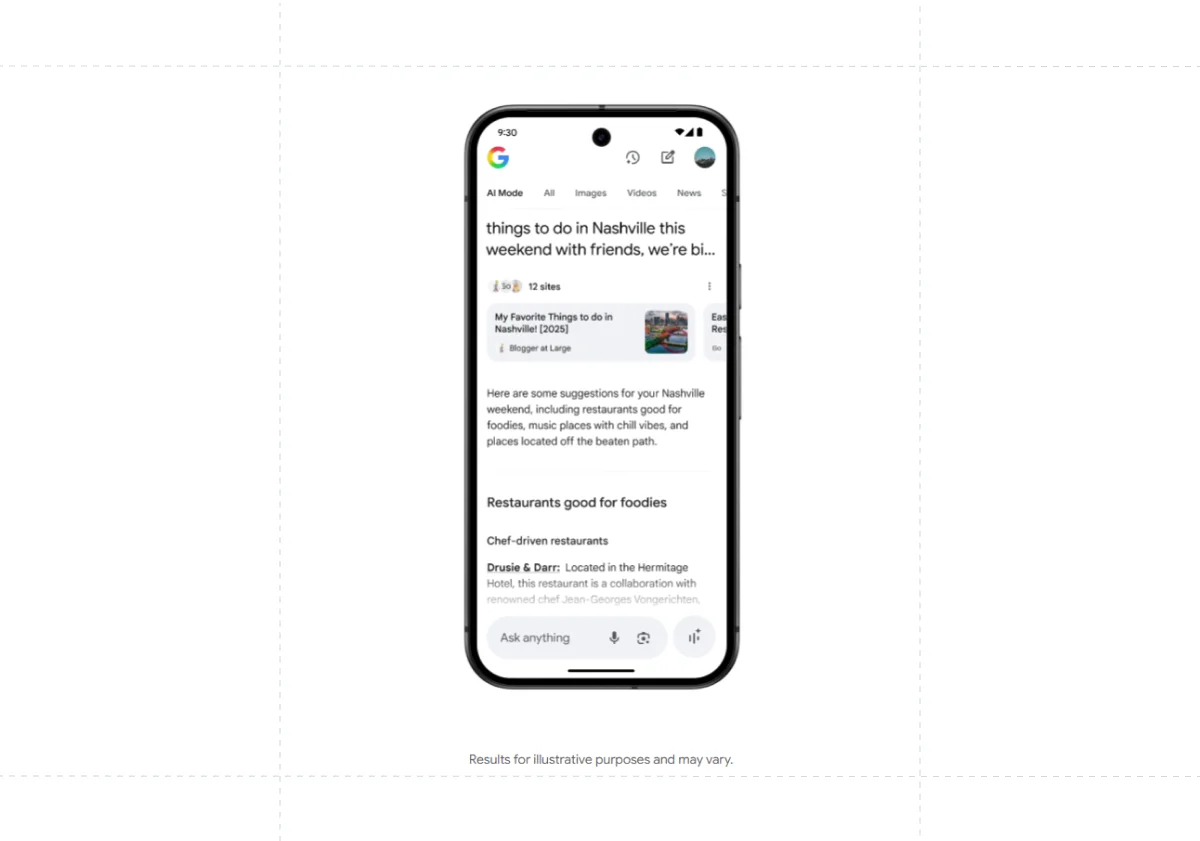
7. Educational help
It can tutor or explain concepts. Use the “Live” camera Q&A or text chat to get step-by-step explanations and links to more resources.
As time passes and Google AI Mode becomes stronger with user behaviour data, we are confident that it will evolve, adding more functions to what we can do with it, as it’s an interesting feature.
Trust and Transparency of AI Mode Answers
Google is upfront about this. The system "doesn't always get it right," and like any AI, it can hallucinate or miss context.
But here's what Google got right: transparency.
Every AI Mode answer includes source links. Can't figure out if the answer is accurate? Click through to the original sites and verify for yourself.
When AI Mode isn't confident about something, it skips the generated response entirely and displays regular search results instead. No guessing games.
Early testing suggests AI Mode produces more accurate, coherent responses than Google's previous AI Overviews, which, let's be honest, had some embarrassing moments. But you should still fact-check important information.
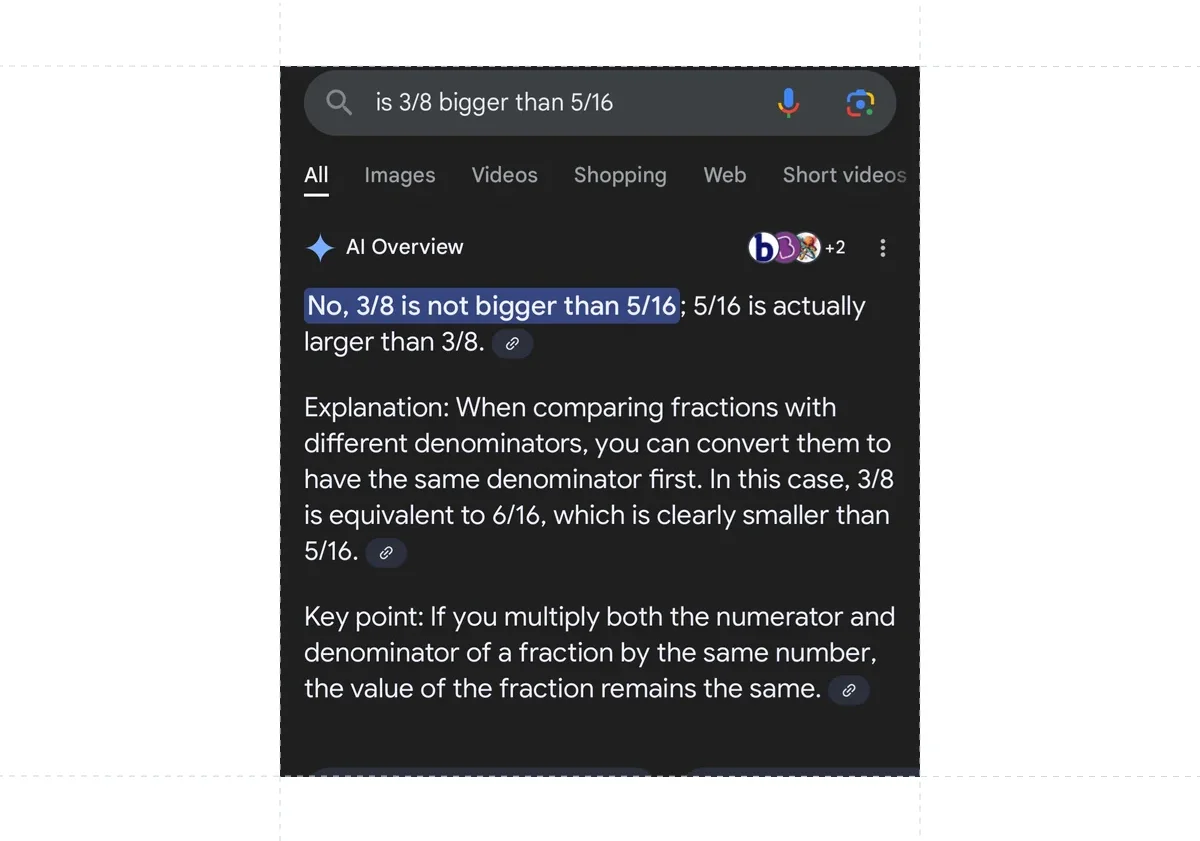
AI Mode vs. AI Search Engines: How does it stack up?
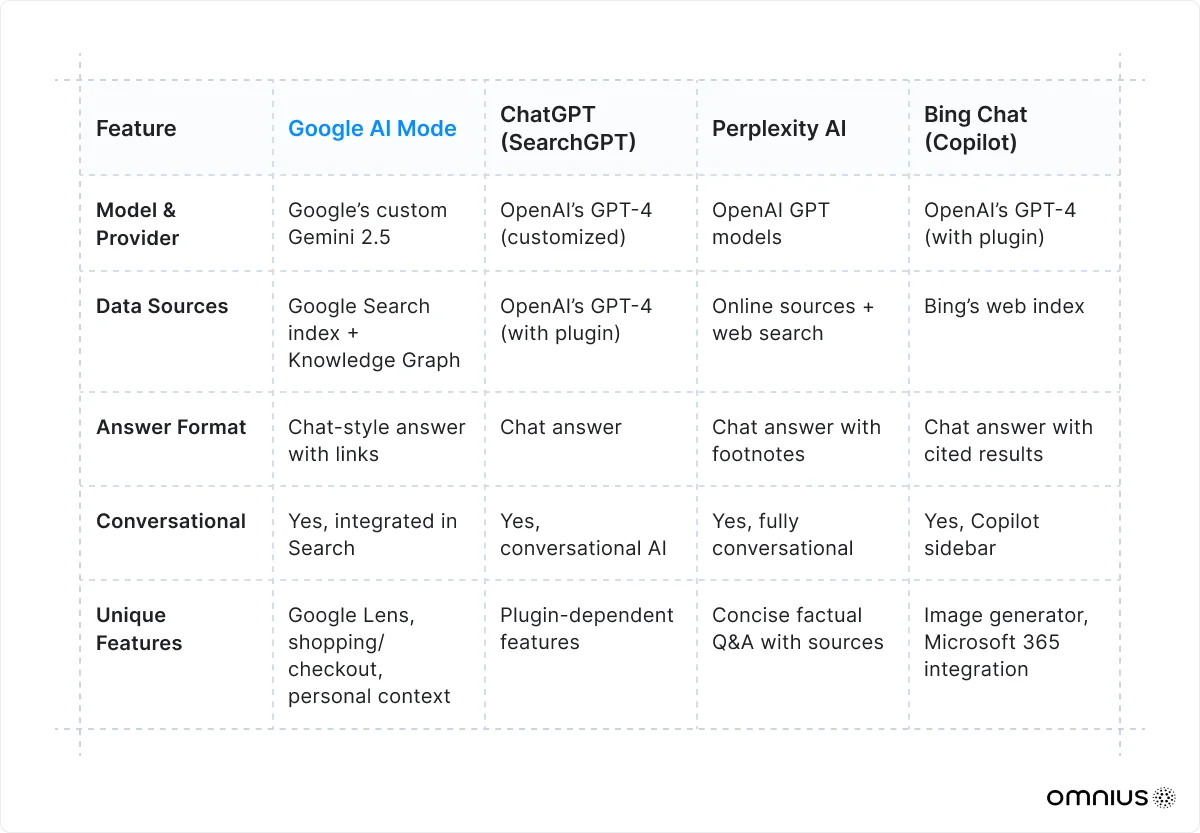
How to Make AI Mode Useful (2 Simple Tricks)
Here's the problem: most people are using AI Mode wrong.
They're typing "weather forecast" and "best restaurants" like it's 2010 Google. But AI Mode isn't a keyword-matching machine; it's a conversation partner.
The secret? Talk to it like a human. Here's how:
1. Talk Like You're Asking a Friend (Not a Robot)
Don't type like this:
- "weather forecast"
- "best restaurants"
- "laptop reviews"
Talk like this instead:
- "Should I bring an umbrella to work tomorrow?"
- "Where can I get good tacos near downtown that won't break my budget?"
- "I'm a graphic designer who travels a lot - what laptop won't die on me?"
The difference? You're giving AI Mode context about what you actually need.
When you ask like a human, you get human-like answers. When you type like a search engine, you get robotic responses.
2. Paint the Full Picture (Details Matter More Than You Think)
Vague questions get vague answers. Specific questions get gold.
Weak question: "How do I lose weight?"
Strong question: "I'm 35, work a desk job, and have 30 minutes in the morning. What's a realistic workout plan that doesn't need a gym?"
Weak question: "Best phone?"
Strong question: "I take lots of photos, my current phone dies by 2 pm, and I don't want to spend more than $600. What should I buy?"
The more you tell AI Mode about your situation, the better it can help you. Don't make it guess what you need.
How to Track Traffic from Google AI Mode?
Traffic from Google AI Mode shows up as 'Google/organic traffic' in Google Analytics 4, which is exactly where it should be.
Fun fact: There was actually a bug at launch where AI Mode traffic appeared as direct traffic instead.
SEO Twitter went wild, John Mueller jumped into LinkedIn discussions, and Google fixed it within days.

To track your AI search performance, you can try Atomic AGI - it’s a one platform to analyze & utilize all SEO and LLM data more efficiently.
How to Optimize Your Website for Google AI Mode?
Traditional SEO isn't dead, but it's no longer enough.
Getting featured in AI Mode requires a hybrid approach: traditional SEO strategies plus GEO strategies.
Here are some strategies that a typical AI search engine optimization service covers to get mentioned in Google AI Mode:
- Use Structured Data (schema): Mark up important content (FAQs, Q&A, products, recipes, events, etc.) with schema.org so Google’s AI can easily parse it.
- Backlinks & Mentions: Being mentioned or linked by other authoritative topical sites signals credibility.
- Branding: Build a strong, recognizable brand by consistently delivering valuable content on multiple channels (like Reddit, Quora, Medium, etc.), creating trustworthy content, and encouraging users to search for your brand actively.
- Format Content Clearly: Organize answers in short paragraphs, bullet lists, and tables. AI Mode models are better at extracting info from well-structured content.
- Focus on E‑E‑A‑T: Include author bios, cite reputable sources, and build your brand’s authority across your topic.
Is SEO Dead?
Let's address the elephant in the room: Is SEO dead?
Short answer: No. But it's changing.
Here's what's happening: AI Mode still pulls information from websites to generate answers. No websites = no AI answers. So, content creators aren't going anywhere.
But here's the shift: you might get fewer direct visits for simple queries ("What's the capital of France?"). But being cited as a source in AI Mode responses? That's the new gold standard.
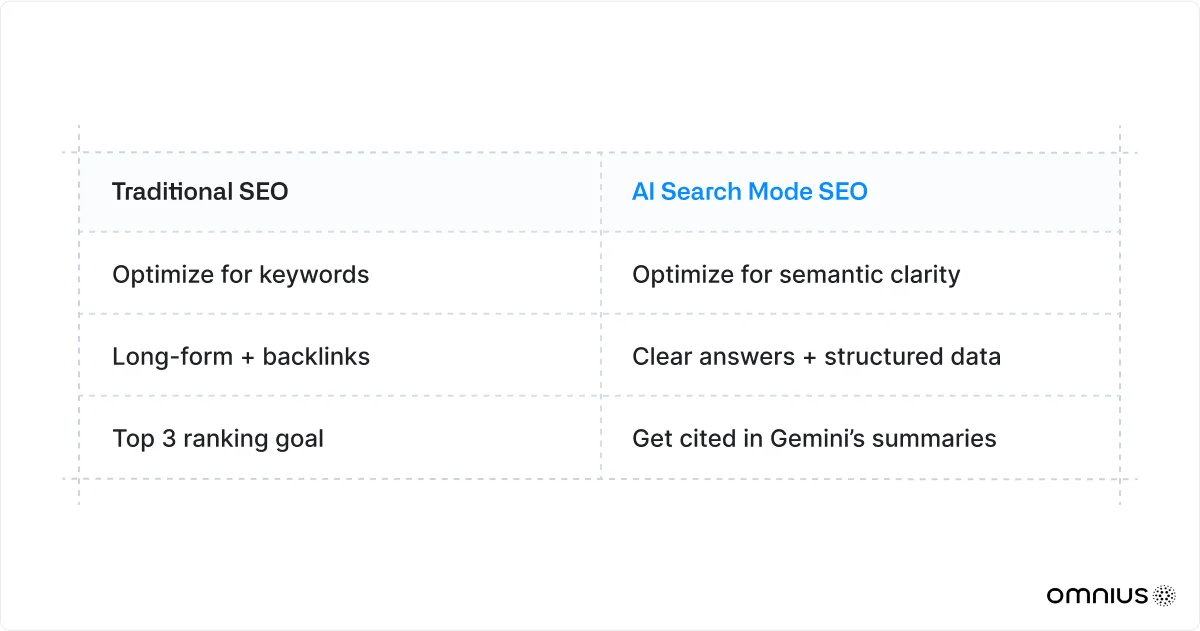
Think of it this way: besides optimizing for position 1 in search results, you're also optimizing to be the trusted source AI Mode quotes.
The websites winning this game are the ones getting ahead of the curve, not waiting for perfect SEO strategies that might never come.
Conclusion
AI Mode isn't just another Google update; it's a complete paradigm shift.
Smart businesses are already adapting. They're optimizing for AI citations, not just rankings.
They're creating content that feeds AI engines across the board, ChatGPT, Perplexity, Claude, and now Google's AI Mode.
The companies that will dominate tomorrow's search market, they're not waiting for the perfect strategy. They're experimenting, learning, and adapting right now.
Ready to dominate AI search? Partner with Omnius to transform your brand's visibility across all AI-powered search engines.
FAQs
Is AI Mode free to use?
AI Mode is available free of charge to all users in the U.S. and is accessible on both desktop and mobile versions.
Is AI Mode the same as ChatGPT?
Google AI Mode and ChatGPT work on similar principles; they both provide answers in a conversational format that directly responds to questions. However, AI Mode can personalize responses based on the user’s previous history, while ChatGPT does not.
Keep Learning
Google’s SGE Review - 7 Shocking Insights You Should Know [Explained]
ChatGPT Is Using Google Search: Here's How to Win with Snippet Optimization
How to Rank in Google AI Overviews with 8 Actionable Steps?



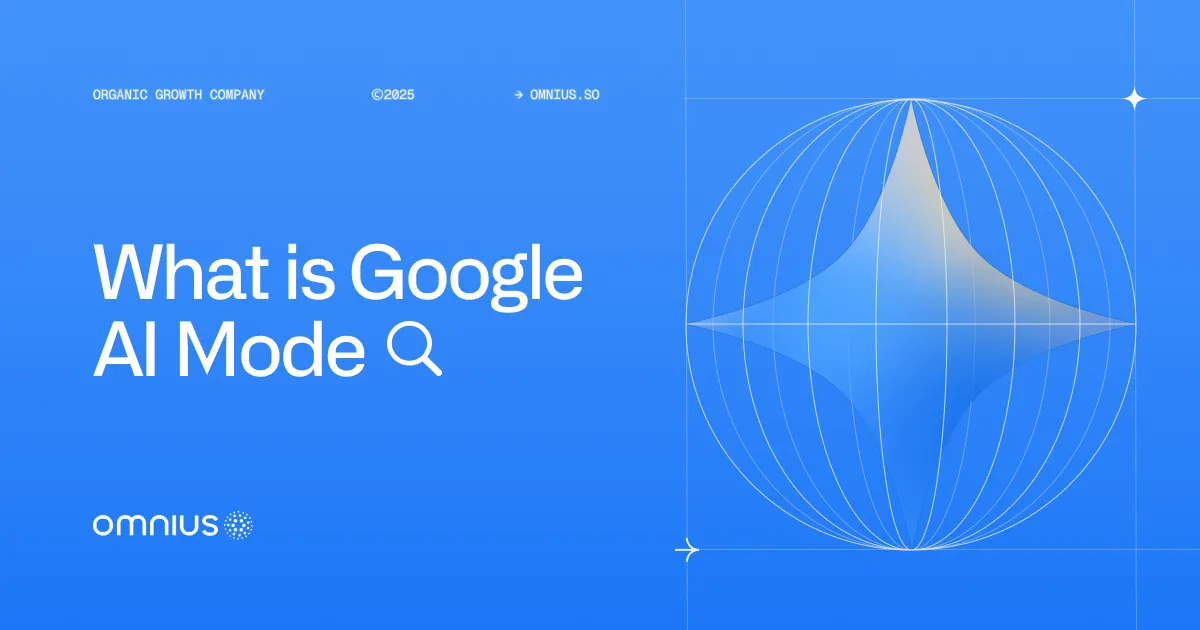





.png)

.svg)








.svg)














.png)

.png)


